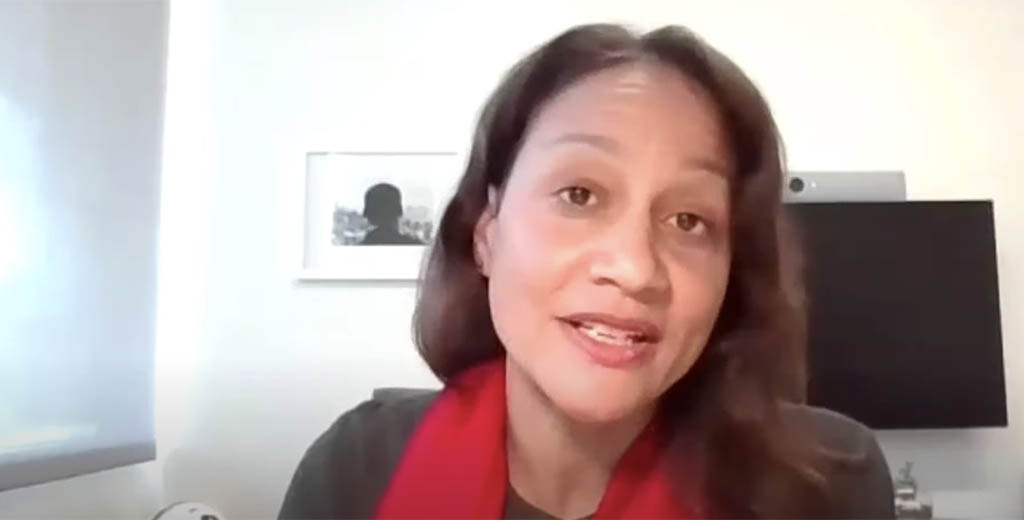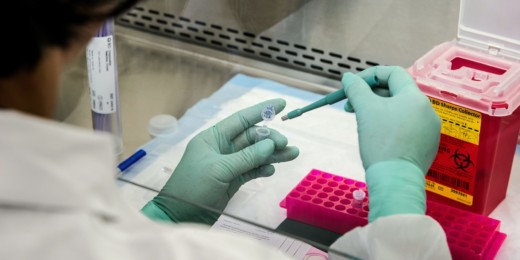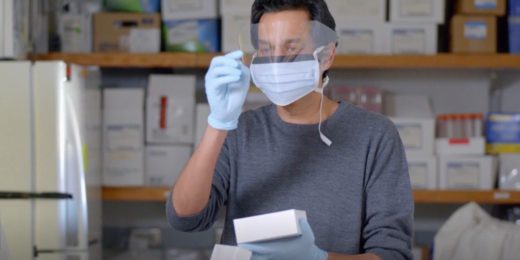Stanford Health Care leaders have been reaching out to their workforce to explain how COVID-19 vaccinations will be rolled out in the coming days, and to answer questions about the vaccines.
In an online informational meeting on Dec. 15, Megan Mahoney, MD, discussed her decision to be vaccinated. Mahoney, chief of staff for Stanford Health Care and clinical professor of medicine and population health, shared how she and her family members, including her African American mother who's in her 70's, grappled with their concerns.
Mahoney made her decision based on those conversations, and by weighing the risks of being vaccinated against the risk of getting COVID19. In the end, she said, it was important to her be part of the collective to be vaccinated, to be a role model, and to be a part of the solution."
Here are the video and transcript of Mahoney's remarks:
Megan Mahoney, MD, chief of staff at Stanford Health Care and clinical professor of medicine at the Stanford School of Medicine, shares how she decided to get the COVID-19 vaccine.
Talking over concerns with family
I know that many of us are experiencing some hesitancy about taking [the COVID-19] vaccine and I know that this is entirely natural. So I will share with you how I spent my time thinking about my decision to take this vaccine and how I talk about it with my primary care patients.
First, I sought my family's advice, starting with my mother. My mother, who is in her 70s, is a retired educator. She's from Memphis, Tennessee, and is an African American woman raised in the South. She has had experience with false promises in medicine and I can understand why she and my extended family members are cautious about this vaccine.
There's a long shadow of medical experimentation, exploitation and neglect that has built a legacy of injustice and mistreatment. So my mother says that, yes, she's eager to receive the vaccine and be, you know, part of the solution, but at the same time she doesn't want to necessarily be first in line.
So she and I shared our gratitude for the hundreds of thousands of vaccine trial volunteers who have gone before us and for the many more vaccine recipients from across a very diverse population in the U.K. and now this week in the United States, because now we know that severe side effects are extremely rare and that this vaccine is very safe.
Then I spoke with my sister, who is a nurse. She was previously a medical assistant working in the Bay Area and she also is a nurse practitioner. She's confident in the science and is eager to receive the vaccine. She says that she is deciding to receive it because she wants to protect her family.
Similarly, I spoke with my husband, who is a former chef, and he's deeply concerned about the entire food services industry. He is also very excited about the vaccine. He cannot wait for me to be vaccinated, as he has been a supportive spouse living with someone who is a front-line health care worker over the last nine months.
Doing her research on vaccines
Finally, when I was exploring this decision as a physician, I trust the FDA [Food and Drug Administration] in our process, but I also like to do my own research and evaluation before making a medical decision like this.
So, I looked into how many people of color were enrolled in the vaccine trials. Were there any differences in the effectiveness and safety among different racial and ethnic groups? I was happy to see that over 3,000 African Americans generously volunteered; over 10,000 members of the Latinx community participated; over 1,500 Asians stepped up; almost 500 multi-racial people enrolled as well.
This reflects a broad commitment to create confidence in the scope and results of the study and I'm grateful to all the volunteers and everyone's collective effort to bring this moment to fruition.
I was happy to see that the study showed that that the vaccine is effective -- 95% effective on average -- and it worked and was safe across all racial ethnic groups in all age groups.
So, after evaluating all of these factors, I weighed the potential risk of the vaccine against the risk of getting COVID. My risks for COVID come from working in a healthcare setting and also living in a neighborhood that is experiencing a very high rate of new cases.
After weighing the pros and cons, I decided to step up to be part of the collective to be vaccinated, to be a role model, and to be part of the solution, so that in the foreseeable future we can celebrate overcoming this virus together.
A year of collective fortitude and strength
This last year, as I think about it, it's just been a brilliant response to COVID here at Stanford Medicine. The pandemic has really shown our collective fortitude and strength.
I know we're still in the dark days and we must remain vigilant to stay safe and care for our patients. But the most stirring moment of this momentous year is happening this week! The vaccines are coming, delivering hope when we need it the most.
I recognize that we all have a significant decision in front of us and, like me, you have a decision to make about taking this vaccine. But I know that the Stanford Medicine community is here to support you with that decision, and we will continue to support each other throughout, as always.
Image from Stanford Health Care's Vaccine Information Webinar on Dec. 15.






